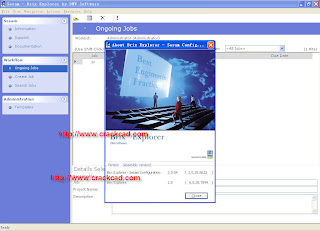
The March 2007 release of Sesam contains significant improvements, with new versions of the industry-leading software tools GeniE, HydroD and DeepC.
The new release represents a major upgrade of Sesam, with improvements and new features that will increase efficiency and quality in the daily work. The focus has been on improving modelling speed and support for post-processing and code check.
For each program, a detailed description of improvements and new features are available in the updates section at the support site.
A few selected highlights from the many new features and improvements are described in the following.
Brix Explorer
Brix Explorer was released in 2006 to replace the Sesam Manager; it has become the main entrance to the Sesam programs. This leading-edge technology will enable you to build on the pre-defined templates included in Sesam to create your own customised workflows, integrating your own best engineering practice. Based on experience from one year’s use, we have updated the tool to become even more userfriendly and efficient in modelling and executing Sesam projects.
GeniE with integrated code check of fixed structures
The new release allows for code checking according to API/WSD and AISC/ASD directly from GeniE. Other relevant codes, such as Eurocode, Norsok, etc. are in the plans for future releases of GeniE. Clients with valid maintenance agreements on Framework and GeniE will receive necessary licences to perform code checking in GeniE.
GeniE for floating structures
Since June 2005, significant resources have been spent on implementing features for more efficient modelling of floating structures such as FPSOs, semisubmersibles and spars. The program has been extended to cover the modelling and meshing of the complex curved surfaces typical for these structures. GeniE will automatically create compartments for all closed volumes in the model. Changing a model, by for example moving a watertight bulkhead, will result in an automatic update of the compartment configuration. The compartments can easily be loaded with concept loads such as water ballast, oil, ore, etc. The loads are automatically applied to the analysis model based on concept load, filling height, etc. The compartment definitions are automatically transferred to HydroD for hydrostatic or hydrodynamic calculations.
HydroD for stability analysis and improved ballasting
Since the last release of HydroD, new features have been implemented for stability analysis and improved ballasting of compartments. This means that both hydrostatic and hydrodynamic tasks can be carried out in HydroD, using the same model input from GeniE. Significant savings in manpower resources are achieved because of much less modelling time, and reduced probability for inconsistencies between the various tasks to be performed.
Some of the new features include computation of GZ curves with and without deck tanks for offshore floaters, automatic computation of rotation axis, and connecting flooding openings to compartments. The stability rule checking may be performed according to MARPOL, IMO (general ships and mobile offshore units), IBC, IGC, and the Norwegian Maritime Directory (mobile offshore units).
 Software training,tutorials,download,torrent
Software training,tutorials,download,torrent